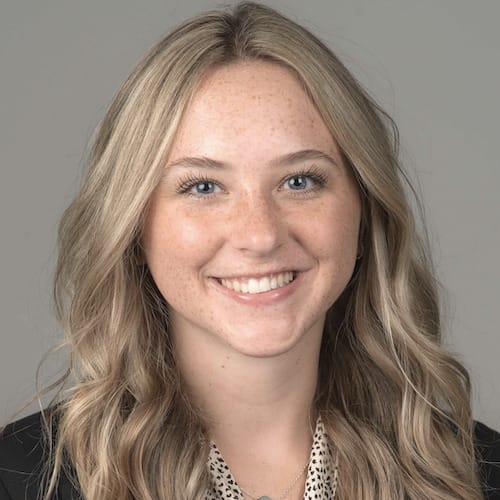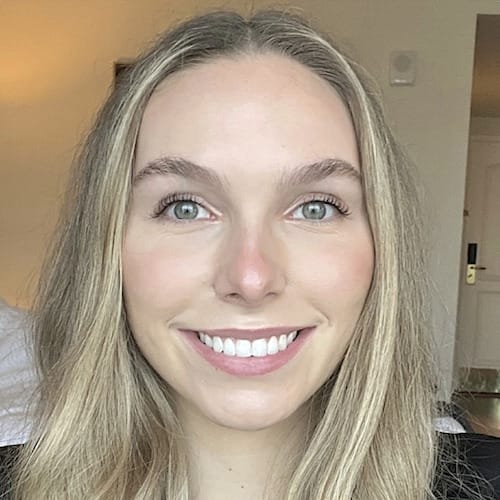


Senior living leadership – What’s that?
If you were to ask high school students their thoughts about pursuing careers in senior living leadership, they would probably ask, “What’s that?”
Worse yet, they may scrunch their noses and make offhanded comments about not wanting to work in a nursing home, voice that their options would be limited or create dismissive comments about negative stories they caught in the news.
Senior living may not seem cool to many teenagers, but interning in the field has been an awesome experience for us. More students should jump on the bandwagon.
Our journey into senior living
We are two college students, both of us currently working at the Vision Centre: Leadership Development for Aging Services initiative, a group that encourages others to enter the field of senior living and care administration.
Both of our paths are different, but we both were drawn to the aging services field to make an impact on the lives of older adults.
Lily came into the field after first considering a career in banking. Riley is the daughter of a continuing care retirement community administrator, someone who grew up around the field and knew both the work environment and the inherent rewards.
We know many friends who are among the nose-scrunchers. But we also know the truth about this field — and we want to spread the word.
Getting more students interested in the field of senior living leadership
As many well know, the field of senior living leadership is flooded with misconceptions, such as: nursing homes are where people go to die; senior living communities are untrustworthy, especially in light of COVID-19; and the field of healthcare administration doesn’t offer as many opportunities as does a business degree.
Those misconceptions, however, couldn’t be further from the truth and not only push negative information onto prospective students in the senior living leadership field but also trickle into the mainstream media.
But through various grassroots and organizational efforts, leaders in senior living and students in the field can begin to shift the narrative.
Here are a few ways to accomplish that goal:
- Offer and advertise paid field experiences/internships.
More students would consider the field of aging services if paid field experiences were more readily available. It can be difficult — or even impossible — to commit to an internship without pay and housing, especially if one is juggling rent and tuition.
Moreso than just the pay, it’s critical to share what field experiences can look like and how meaningful such experiences can be. School is great, and a degree is important, but the majority of applicable lessons are learned in the field. For example, there’s a difference between talking about staffing ratios in class and coming into the workplace where an administrator is down two nurses and determining how to handle that tricky situation.
Additionally, it would be meaningful if students understood how hands-on their field experiences would be. You really get to understand day-to-day operations and focus on what an administrator role looks like. You get to oversee multiple departments and understand how a community operates in general. It really can broaden your scope of what your opportunities can be after graduation.
- Share positive stories on social media, the web and in earned media outlets.
For high school students, perceptions of the field can hold much weight, even within their own households. If parents have negative views of the aging services field, then those views could deter a young adult from picking senior living leadership as a major, because parents hold much influence on their children’s decisions.
So much negativity is flooding the newsfeeds and influencing those perceptions. People may see one story about mismanagement of a senior living community, but they don’t realize that the story involved one community out of all of the communities in an entire state. So they gain a perception that senior living communities and nursing homes are horrible, when that couldn’t be further from the truth.
It’s important to show stories about senior living communities that empower people to be independent, foster opportunities for a social life or create openings for lifelong learning. Those stories, over time, will start to shift the narrative. Additionally, more advertising that depicts older adults who are active and are thriving in senior living (while being honest) really will help.
Finally, playing into TikTok and Facebook and other social media avenues can assist. Anyone scrolling on Facebook will see those positive stories pop onto their feed, and if more communities stepped up to share their stories, and what’s working, and how they’re improving their communities, then the perceptions will start to move toward the positive.
- Partner with high schools to offer volunteer hours and paid opportunities.
Many high schools mandate community service hours for students. Sometimes, those hours are built into an elective path. For example, at some high schools, senior students participate in certified nursing assistant rotations.
Senior living communities should proactively try to present those opportunities to high school classrooms. By offering their campuses as spaces where young people can volunteer or participate in learning experiences, students will be introduced to the field and stigmas will start to break.
Or even offering paid opportunities. If you tell high school students that they can have hospitality jobs that don’t require a big commitment and pay $15 an hour, they will probably sign right up.
Once students engage in those senior living communities and see what those spaces are all about, they will spread the word to their parents and networks and shift the conversation to a positive image in this field.
We need to shift the narrative together
The responsibility to shift the narrative and perceptions of senior living doesn’t fall on one person or organization. Colleges and universities need to advertise their programs more broadly, senior living communities should proactively engage with local high schools, and marketing teams should continue consistently pushing positive stories into the world.
If we are going to get 16, 17 and 18-year-olds to consider this field, then we need to fill the space with messaging that shows them the opportunities in senior living and the effects that they will have on residents’ lives. Let them know that when they have stressful days at work, they can walk out the door and be greeted by 60 friends who will put smiles on their faces and remind them why they’re there.
If we could go back and speak to ourselves as high school seniors, we’d be reminded of the phrase “Love what you do, and you’ll never work a day in your life.”
After all, many of those residents saved their entire lives to enjoy their retirement. Our job as leaders is to provide them with the best experiences possible, including ensuring that we are preparing the leaders of tomorrow right now.
We do love being part of the senior living workforce. We’d say more, but we have to roll up our sleeves and go back to living our dream careers.
Lily Kiffmeyer is an undergraduate student at the University of Wisconsin-Eau Claire and a student research assistant at the Vision Centre.
Riley Tagatz is a graduate student at Western Kentucky University and a student research assistant at the Vision Centre.



